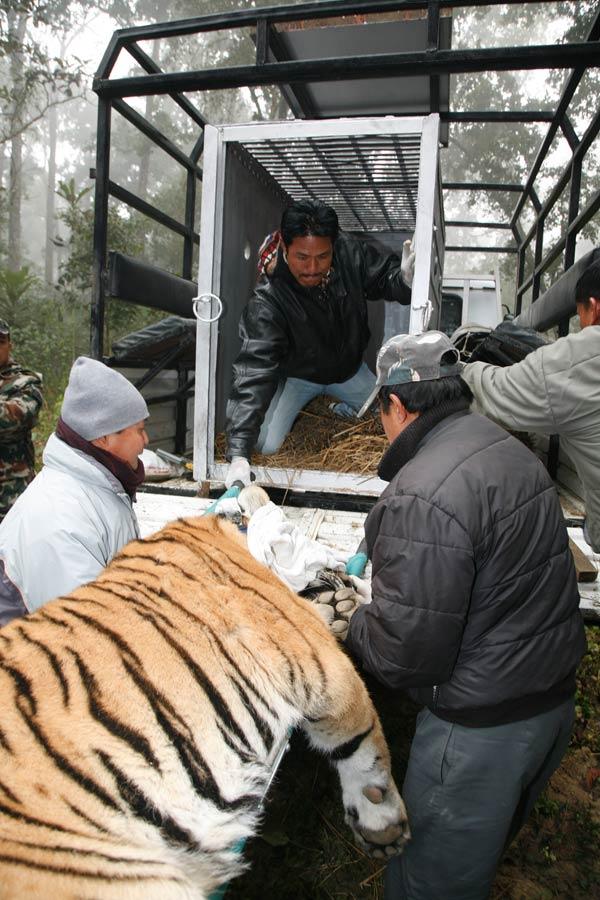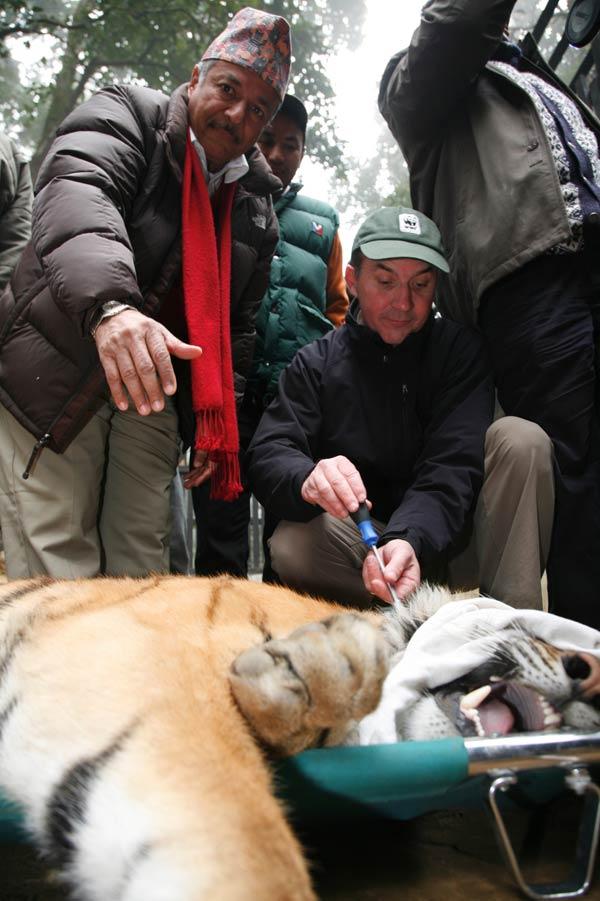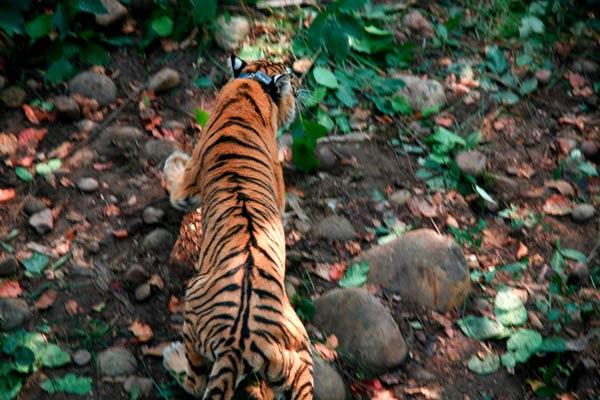Wild Tiger Gets New Home in Nepal


A wild tiger has a new home this week after Nepalese authorities moved the animal from one national park to another. The transport of the highly endangered species was a first for the Asian country.
Park staff captured the big cat in September 2010, when the injured tiger wandered into a hotel in the tourist town of Sauraha, just outside Chitwan National Park. The tiger, a male, was placed in a secure enclosure at the park's headquarters for treatment. [See all nine tiger subspecies .]
On Friday (Jan. 21), a team of wildlife veterinarians, wildlife biologists, park staff and conservationists tranquilized the fully recovered tiger and fitted it with a GPS satellite collar, then loaded the animal into a specially constructed trailer.
Under tight security, the big cat was driven 370 miles (600 km) west to its new home in a fertile river valley in Bardia National Park.
Park authorities say the tiger's new park home is an ideal habitat. It is vast, with plentiful prey, a low incidence of human-tiger conflict, and a record of improved anti-poaching efforts .
"Nepal is one of the countries in the world where the prospect of doubling the tiger population is quite good, if tigers are given enough space, prey and proper protection," said Krishna Acharya, director of Nepal's Department of National Parks and Wildlife Conservation.
Based on agreements reached at the first-ever tiger summit in Russia late last year, governments and conservation groups from around the world are striving to double the globe's quickly dwindling tiger population. According to some estimates, only about 3,200 tigers still survive in the wild.
Get the world’s most fascinating discoveries delivered straight to your inbox.
The tiger's satellite collar, which sends data on the animal's location every half-hour, will help scientists gain a better understanding of tiger ecology, improve conservation interventions such as anti-poaching operations and keep tabs on how the tiger is adapting to its new environment.
"This translocation the first of its kind in Nepal is a concrete example of our commitment to saving wild tigers using the best science available, including the application of cutting-edge technologies," said Deepak Bohara, the government's minister of forests and soil conservation.
An international conservation organization, WWF, helped orchestrate the tiger move.





